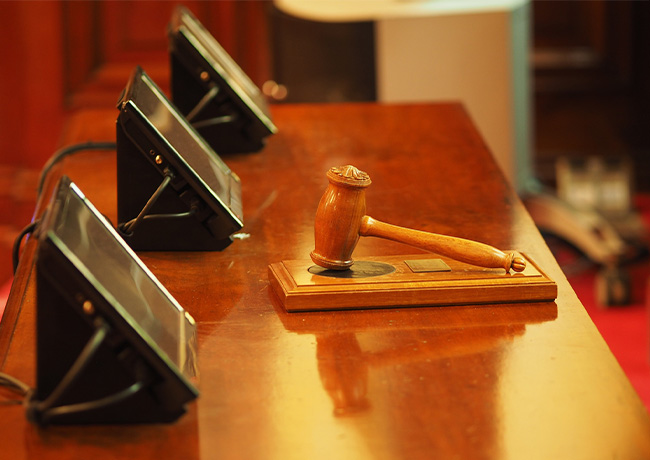Article by Dr Mark Deng
South Sudan’s Chief Justice, Chan Reec Madut, has been implicated in serious corruption allegations since independence. Some relate to the recruitment process within the judiciary. Others relate to overstepping the bounds of his judicial role by encroaching on the executive’s domain.
In 2013, for example, Chief Justice Madut appointed 78 legal assistants, including his daughter, without following the proper recruitment processes. The legal assistants were handpicked, not hired on merit.
These issues of corruption within the judiciary have prompted some judges to resign from office. Justice Clement Kuc was the first to resign in 2013. In his resignation letter (reported by various news outlets), he accused Madut of “nepotism, favouritism, and lack of strategic direction” for the judiciary.
The chief justice also stands accused of blurring the lines between the executive and the judiciary. In 2016, for example, he wrote a congratulatory letter to President Salva Kiir Mayardit, following the president’s unconstitutional decision to increase the number of states from 10 to 28 (unconstitutional in the sense that the president lacked power to create more states).
The letter was sent in disregard for the principle of the separation of powers enshrined in the Transitional Constitution – South Sudan’s supreme law.

The separation of powers gained prominence in the world in the 18th century. It requires the three branches of government – legislature, executive and judiciary – to exercise different functions, and not to interfere in each other’s functions unnecessarily.
It is indispensable to good governance as it helps limit abuses of power. Each branch of government must account for how it exercises its powers, as well as how it carries out its responsibilities. In South Sudan, the national institutions of government – especially the executive – lack the discipline to observe their limits of power. As a consequence, the constitutional lines of power have become blurred.
These blurred lines are, in part, responsible for constitutional failure in South Sudan, which is one of the key findings of my 2021 thesis. Constitutional failure can manifest in many forms. In the case of South Sudan, the Transitional Constitution has failed to provide an effective regulatory framework to ensure the government abides by the rule of law and promotes democratic governance.
The consequences of this are clearly evident in the country. These include a dictatorial government, political disorder, and gross violations of human rights, which occur with alarming frequency.
Role of the chief justice
Under the transitional constitution, Madut’s role is administrative – he administers the daily operation of the Supreme Court. This may involve allocating cases for determination, and administering judicial resources (budgets) to ensure public money allocated for the court and its officeholders is spent appropriately.
He can also issue “judicial circulars … and directives to the courts … for the proper and efficient administration of justice”.
Beyond this, the chief justice, as titular head of the judiciary, has the responsibility to ensure the political branches of government uphold the rule of law. This responsibility is met by adjudicating the constitutionality of laws, as well as ensuring executive actions are lawful.
This is perhaps the most important task for the judiciary. But it has proven difficult to meet in South Sudan for a range of reasons, including the government’s dictatorial attitudes, which threaten judicial officers or interfere in their functions.
Perhaps as a result, Madut has pandered to the whims of the executive by ignoring the constitutional boundaries for his office. In 2015, for example, he bypassed the National Judicial Service Commission, which is mandated to recommend judges for appointment, and personally appointed 15 judges to lower courts.
The appointments were made contrary to the transitional constitution and the Judiciary Act 2008. Under these laws, it is only the president of the republic who can appoint judges.
Actions and consequences
The chief justice’s actions have many consequences. For example, they undermine the independence, impartiality and competence of the judiciary. This, in turn, erodes public confidence in the judiciary as regards the proper administration of justice and upholding the rule of law. The judiciary must be independent and impartial if it is to earn public confidence.
Chief Justice Madut’s actions, especially his assumption of judicial appointment power, arguably constitutes official misconduct. This is a ground for which a judge can be removed from office under the transitional constitution.
It is clear, however, that the executive and (Parliament) lacks the incentive to enforce the constitution accordingly, and hold judges accountable for their actions. The chief justice will likely continue to engage in these sorts of unlawful practices as long as he remains in office.
In fact, there is uncertainty around the chief justice’s tenure of office. The transitional constitution leaves it to parliament to enact a law to provide for judges’ tenure. To date, parliament has not enacted such a law, and judges serve in office at the president’s pleasure.
All things considered, observing the power boundaries in the constitution remains paramount. This is one way to protect and promote the rule of law in South Sudan.
The disregard of this established constitutional order has led to the blurred lines between the branches of government. Inevitably, this has seen the erosion of the rule of law as a foundational constitutional principle, and the curtailment of citizens’ rights and freedoms.
Read More: PhD candidate Mark Deng wants to help South Sudan become a thriving democracy
![]()
This article is republished from The Conversation under a Creative Commons license. Read the original article.



